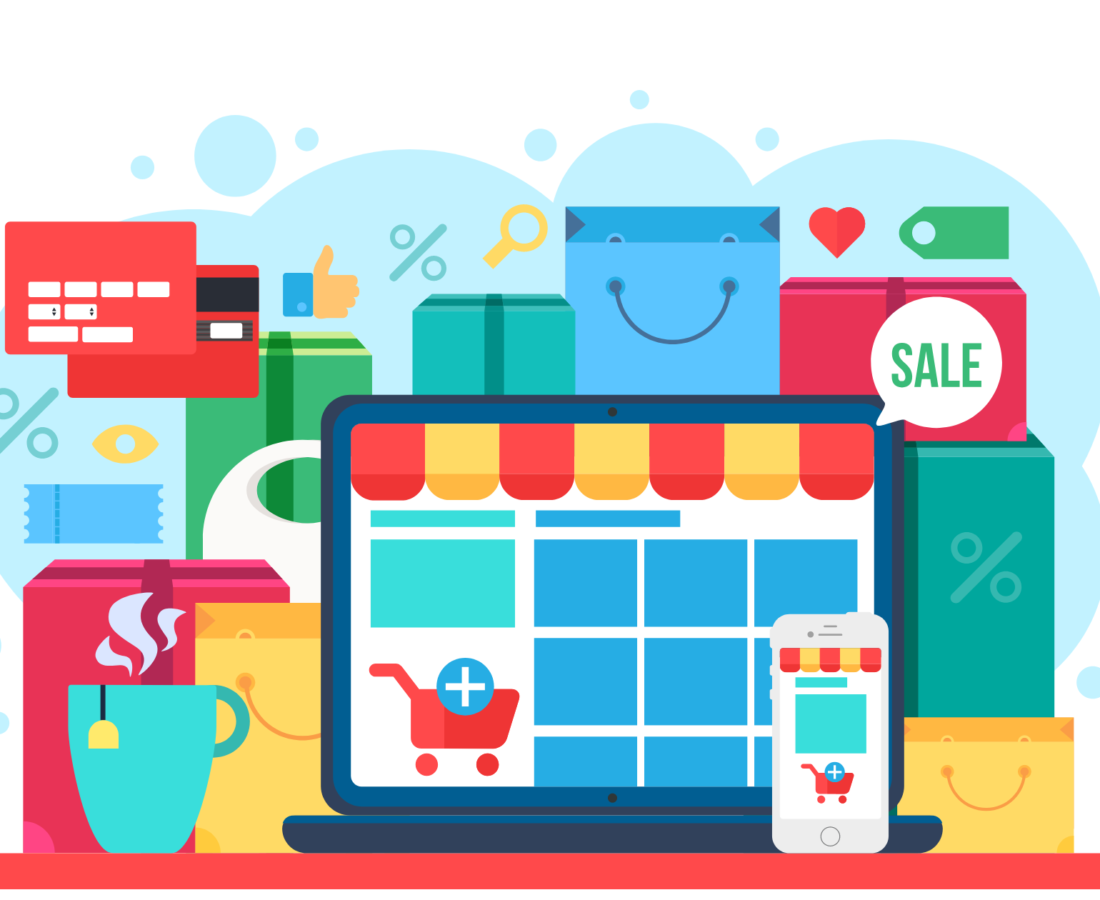Still haven’t gotten back from a much-needed break after a busy holiday season?
But the time to relax isn’t just here yet. Moving onto 2023, we need to draft our plans early to reach our goals for the year. Remember, implementing tested strategies helps you save time later in the game, when all you have to do is just minor changes instead of scratching your head and looking at the drawing board again.
That’s just the partial reason behind the working of this article. The main reason is due to the fact that customer experience (CX) much like e-commerce is an ever-changing area and you need to keep yourself updated with new trends in the field to thrive and enjoy success.
Before we get started with the CX trends you must be aware of/ implement in 2023, let’s revisit things a little.
Why E-commerce Businesses Need to Stay Updated with the CX Trends
CX is a powerful element that e-commerce businesses simply can’t ignore because it contains the power to impact important customer satisfaction metrics such as CSAT scores, retention rates, and lifetime value. In short, CX helps you build and maintain a loyal customer base.
86% of buyers are willing to pay more for a great customer experience.
That’s not all! As we get deeper into this, we’ll also look at some pain points e-commerce businesses may face if they are not updated with the current CX trends in their field.
- Decreased customer satisfaction – With high customer expectations, settling for the bare minimum with CX can cause customers to become frustrated, leading to decreased satisfaction and loyalty.
- Increased churn – These customers who are not satisfied with their CX may be more likely to churn and take their business elsewhere, leading to a decline in sales and revenue for the business.
- Negative brand reputation – Apart from just shopping with you, these customers will also be keen to share their frustrations on social media, leading to negative word-of-mouth and damaging your brand’s online reputation.
- Difficulty attracting new customers – A poor CX can make it difficult for an e-commerce business to attract new customers and may result in a decrease in overall growth.
- Increased competition – E-commerce businesses that are not keeping up with CX trends may struggle to compete with businesses that are prioritizing CX and offering a better customer experience.
Now that we’re aware of the importance of CX and staying updated with it, let’s move on to the focus of the article — CX trends that are in store for 2023.
6 E-commerce CX Trends to Look out for in 2023
Paying attention to growing trends can help you boost your business’s bottom line and ensure you’re not left behind, which is increasingly important in today’s competitive market. So, without any further ado, here are some e-commerce CX trends that are predicted in 2023:
1. Brands will employ different personalization techniques to stay relevant
It’s 2023, CX is no longer about just customer experiences but “customized experiences”.
Customized experiences are the need of the hour for customers who expect brands to know about them and provide experiences that are tailor-made for them, i.e customers expect a personalized experience at every channel and touchpoint.
The data speaks for itself, 91% of consumers are more likely to shop with brands that make them feel special with their interactions via personalized offerings and recommendations. This means that personalization is no longer an option to have but has become the bare minimum.
So how exactly can you use personalization to stay relevant?
- Hyper-personalization – With the help of shared customer data from tech stack integrations, you can enable different customer-oriented departments to initiate contextual communication with your customers based on their recent purchases, interests, etc.
- Automated personalization – With technological advancements, you can also look forward to automating personalization tasks, email campaigns and product recommendations. Apart from providing a special experience for customers, automating also helps in saving valuable time and money.
In short, modern personalization techniques enable you to create experiences that specifically cater to each customer, improve their satisfaction, and increase conversions at a higher rate.
“Brands will need to take a data-led approach to understand consumers better and build greater trust with their customers and retain them.” – Suzanne Steele, VP & MD UK, Ireland, Middle East, and Africa at Adobe.
2. Omnichannel experience will be play a huge role in offering customer convenience
While the ‘buzzword’ omnichannel has been making waves for the past few years, it has still proven to be a relevant trend when it comes to customer experiences, solely due shoppers’ need for seamless shopping experiences.
More than 80% of shoppers expect brands to offer omnichannel experiences. Currently, 52% of e-commerce sites have omnichannel capabilities.
But what’s new in omnichannel commerce in 2023?
- Leading e-commerce merchants will be looking to create/ make use of a cohesive e-commerce ecosystem that combines product discovery, customer data and marketing automation, and headless content management. Major parts of an e-commerce ecosystem can be covered on your own. For the rest, there are a set of tools and solutions that you can integrate to create a more personalized experience for your customers.
- Also, customers’ increasing expectations have resulted in the need of reaching out to businesses not only wherever but whenever. I.e customers now also expect to be in the know of their order deliveries and returns. Thus, you need to extend your efforts of a complete omnichannel experience right to the post-purchase.
The verdict with omnichannel is clear. Customers expect you to provide the same level of experience across the different channels they interact with your business. So, to exceed their expectations you need to take things higher a notch by keeping your experience on-brand across all the channels.
3. Time to leverage customer experience as a key brand differentiator
Brands vying to provide the best CX possible isn’t by choice but by peer pressure from competing businesses. To stand out from the existing competition, brands must understand and keep up with customers’ increasing demands and pursue CX innovations that differentiate their brand, rather than just staying among the flock.
In 2023, Conversational experiences will become a primary competitive differentiator for small businesses – Jenny Choo, Zendesk
Experts also highlight the importance of CX efforts by e-commerce brands in the post-purchase phase. With brands dealing in similar products and similar marketing strategies — shipping delays and delivery times which happen out of the business’ control will be taken into account by customers while choosing brands to shop with.
In such cases, the CX efforts in the post-purchase will play the role of the “brand protector” and help in improving customer satisfaction and brand reputation.
Another trend that has been prevalent across CX this year has been the use of automation by DTC brands across sectors to make their work more efficient.
Remember, your efforts to provide a great CX can not only work as a key differentiator among competing brands. But also has the power to put you ahead of the rest of the lot.
4. Rising customer expectations will pave the way for newer customer service efforts
As we mentioned earlier, customers’ expectations with their orders have been ever-increasing, motivating e-commerce businesses to consistently do better. One such expectation from customers is instant responsiveness from the brand.
Be it product-related information, payment queries, or delivery issues, customers expect quick answers, so that they can proceed to their next course of action ASAP.
One such aspect that is in the limelight is the use of chatbots that make the first contact and helps businesses reduce support tickets and the workload on support reps.
What’s even better is the effort from businesses (and expectations from customers) to answer queries or resolve issues even before the customer raises them by predicting their mindset.
Over 80% of customers say proactive customer service is a positive experience that eventually increases the likelihood of them making another purchase.
To take a proactive approach to customer service, brands must allow their support reps to easily spot issues/ frequent queries and initiate appropriate and contextual communication with customers. This can help in instilling confidence in your customers.
5. Customers will be increasingly worried about their data getting in the wild
Zero-party data is a goldmine that merchants are sitting on. It is valuable information that the customer consensually shares with the business in the hope of getting a better and more personalized experience the next time they shop.
And because of its high importance, customers are overprotective of it. The second they come to know of the lack of cybersecurity at your store will be the last you’ll hear from them. This puts a focus on customer data security in 2023.
If you’re wondering how to get started with data security, here are some things you can follow for a start:
- Assure your customers of your store’s cybersecurity and make them feel confident about shopping with you
- Be transparent, not with data but with information. Share your privacy policies upfront and ask for customers’ consent while getting data from them. You can also go a step further and tell them exactly how this data will be put into effect.
By ensuring customers that their personal and financial information is being protected and following up with strong data security measures, e-commerce businesses can increase trust and confidence in customers, leading to more purchases and repeat customers.
71% of customers would leave a company if it shared their data without permission.
6. Shippers will look to increase their capabilities via real-time information and predictive analytics
The onus of an e-commerce business in providing a great CX goes beyond the buy button and extends to delivery, feedback, and returns. In fact, the post-purchase experience takes up 50% of the overall order experience.
However, as most businesses leave out this part of this part of the CX unwillingly, there exists a big CX gap in the post-purchase phase, leading to multiple issues that nullifies all your CX efforts in the pre-purchase and purchase phases.
To avoid such situations, e-commerce businesses must start taking control of their post-purchase experience and take efforts to optimize them. Here’s how you can do it:
Use real-time parcel tracking to keep up and provide customers with up-to-date information on the location and status of their packages. This can include information such as when a package is expected to be delivered and if there are any delays or issues with the delivery. By tracking your parcels in real-time, you can also get insights on how a carrier performs against specific service levels and in turn use the data to make the right shipping decisions and improve on-time delivery rates.
An extension of real-time visibility into your shipments in transit is gaining the ability to proactively address any issues that arise during delivery and providing customers with accurate delivery estimates. Delivery issues might be inevitable but why let them cause damage to your CX efforts?
You can instead share the real-time data with your customer support reps, so that they can initiate contextual communication with customers and relieve them of the anxiety and frustration while awaiting their parcels.
By resolving critical shipping incidents before they happen, you are setting your customers on the path of delight by not just meeting but exceeding their expectations.
Keeping up with the CX Trends and Overcoming the Competition
Well, that’s pretty much from our end. It is now your turn to keep up with CX trends based on how bad you need them and how best they suit your business’ needs.
For example, customers want to be treated as themselves and not just as a random prospect. Here, personalized recommendations, tailored emails, and targeted marketing can help you offer a more personalized experience.
Similarly, customers are spoiled for options and are in a position to shop from any device and channel they have at their disposal. In such cases, a seamless experience across all channels and convenient shopping experience via offering shipping, easy returns, and mobile-optimized websites, etc. is the way to go.
Talking about convenience, in the era of instant gratification, customers also want their queries and issues resolved quickly and even a reasonable waiting time can make them frustrated. This is where AI and chatbots are being used to improve CX by providing quick and accurate responses to customer issues and handling routine tasks such as WISMO inquiries.
While taking care of personalized CX efforts, also make sure to prioritize your store’s security. Take measures to protect customer data from being shared without their consent and assure your customers that your store is safe to shop with.
As an added bonus, you can also give customers what they expect while choosing an e-commerce business for their product needs. For example, more consumers are considering the environmental impact of their purchases. This is where you can respond by offering sustainable options and transparent communication about your sustainability efforts.
Remember, CX is an ever growing field and the trends too keep coming regularly, making last-year’s trends old-fashioned. To stay in the know of e-commerce trends as they unfold, you can subscribe to a variety of sources such as Industry conferences and events, newsletters/blogs directly to your inbox, research reports, or simply get regular feedback from your customers to get insights on where you can improve the CX.
Post-purchase CX: The key to turning one-time shoppers into your brand’s BFFs
As an e-commerce business owner, you know firsthand the importance of delivering a seamless and convenient post-purchase experience to your customers. That’s where LateShipment.com comes in – our post-purchase automation solution is designed to make it easy for you to manage the post-purchase process and keep your customers happy.
With LateShipment.com, you can automate tasks such as tracking orders, issuing refunds, and handling returns, freeing up your time to focus on other important aspects of your business. Our platform is easy to use and integrates seamlessly with your existing systems, making it a hassle-free solution for optimizing your post-purchase experience.
In addition, LateShipment.com offers a range of powerful features that can help you provide an exceptional post-purchase experience for your customers, including real-time order tracking, customizable email notifications, and a comprehensive returns management system.
Overall, LateShipment.com is a valuable tool that can help you streamline your post-purchase process and deliver a superior experience to your customers – and isn’t that what it’s all about?”






